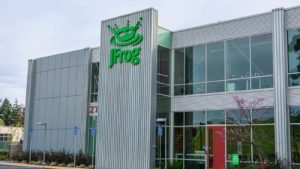For the IPO market — which involves new stocks to buy — things have certainly been robust this year. The activity has been at levels not seen since the heyday of the dot-com boom.
But during the past week, there has been a slowdown. For example, we have seen some postponements of deals, such as from AmeriHome (a residential mortgage company), Mavenir (a developer of network software systems) and Caliber Home Loans (another mortgage operator). There have also been several deals that have downsized their offerings like Biodesix (NASDAQ:BDSX).
Even companies that have marque brands and strong businesses have not been immune. One example is the IPO of McAfee (NASDAQ:MCFE), which is down about 17%.
So is this volatility temporary? Or could this be the start of something more significant? It is tough to tell. One thing that is certain is that the election uncertainty is definitely having an impact — as is the slowdown in the economy.
But then again, this does present some better values for investors. So what looks interesting? Here are seven new stocks to buy now:
- Vertex (NASDAQ:VERX)
- Bentley Systems (NASDAQ:BSY)
- Sumo Logic (NASDAQ:SUMO)
- Asana (NYSE:ASAN)
- ZoomInfo Technologies (NASDAQ:ZI)
- JFrog (NASDAQ:FROG)
- Datto (NYSE:MSP)
New Stocks to Buy: Vertex (VERX)

A good place to find new stocks to buy is in those industries that are not exciting, but offer attractive growth potential. This is definitely the case with the tax analysis and preparation industry.
And one of the top players there is Vertex. Founded in 1982, the company is a leader in software systems to help streamline and manage indirect tax processes. This is a category that includes sales taxes, seller’s use tax, consumer use tax and the value-added tax (VAT). On a global basis, these items account for more than $3.5 trillion in tax revenues.
Vertex has more than 4,000 customers, including over half of the Fortune 500. Its system has support for more than 130 countries.
For Vertex, the market is still in the nascent stages. The fact is that many businesses still use traditional methods for global taxes, such as working with spreadsheets or using enterprise resource systems that were not built for complex tax management. In fact, the company estimates that the addressable market for its software is more than $7 billion in the U.S. alone.
As for the IPO, VERX stock came public in late July and the shares have since gained 38%. The market capitalization is about $4.2 billion.
Bentley Systems (BSY)

This is another older company, having been launched in 1984. But despite its age, it does deserve to be on a list of new stocks to buy.
The founders of Bentley Systems are two brothers, Keith and Barry. They had engineering backgrounds and realized that computers would transform their industry. At first, they developed design software for the VAX mini computer. But when the PCs started to get traction, the company built its technology on this platform. It was a smart move.
Over the years, Bentley Systems has expanded its product offerings and has moved into a myriad of different verticals, such as for building airports, skyscrapers and power plants. The software has certainly proven to be mission-critical for customers. About 80% of revenues come from those that have licensed the software for over 10 years.
Growth has also been solid. Last year, subscription revenues totaled $608 million, total revenue came in at $737 million and net income came to $103 million.
The company also has taken an employee-friendly approach to management. For its IPO, all the proceeds of the offering for BSY stock went directly to the company’s 4,000 employees.
New Stocks to Buy: Sumo Logic (SUMO)

Sumo Logic, which operates a cloud-based management system, came public in mid-September and the shares rose by about 22%. But since then, there has been erosion. SUMO stock is now trading at a loss of 26%. However, this weakness means getting a good valuation — which is not necessarily easy to do when it comes to new stocks to buy.
For the most part, Sumo Logic helps companies with continuous intelligence. This means processing huge amounts of data — 873 petabytes per day and 18.6 billion events per second — using sophisticated algorithms. By doing this, Sumo Logic is able to help provide alerts for areas like cybersecurity.
While the underlying technology is quite sophisticated, it is fairly easy for end users. Sumo Logic has systems to seamlessly connect to a myriad of data sources. There is also the ability to spin-up helpful dashboards. Oh, and yes, the Sumo Logic system has also been effective in helping companies with AI and machine learning.
In terms of growth, it has been solid. From fiscal year 2018 to 2020, revenues jumped from $68 million to $155 million.
There has also been a boost from the impact of the Covid-19 pandemic. Why? Companies are even more focused on the need for digital transformation.
Asana (ASAN)

Dustin Moskovitz, who co-founded Facebook (NASDAQ:FB), experienced the difficulties of managing communications in a fast-growing company. Meetings and long emails were woefully falling short. So Moskovitz led an effort to build an internal messaging platform, which was a big help.
But he thought: Wouldn’t this system be helpful to many other companies? Of course it would.
In 2008, he started a company to pursue this vision, Asana. Moskovitz set out to reimagine project management software.
First of all, it was completely cloud-based and could scale. But Moskovitz also wanted to build a system that was extremely easy to use.
No doubt, the strategy was spot-on. Asana now has about 1.3 million paid users across 190 countries, and revenues spiked by 86% to $142.6 million in fiscal 2020.
As Asana collects huge amounts of data, the company is in a nice position to benefit from AI, which should be be a driver for ASAN stock. Yes, it’s another important lesson that Moskovitz has learned from the Facebook playbook.
New Stocks to Buy: ZoomInfo Technologies (ZI)

High-quality data can be extremely valuable. This is especially the case for customer information. After all, companies will have little concern when paying for data that can lead to higher sales.
All this is very good news for ZoomInfo Technologies. Since its founding in 2000, the company has amassed a database with more than 100 million verified business professionals, 5.5 million executive-level contacts and 16 million decisionmaker direct dials. This includes both publicly available information and proprietary sources. There are also seamless integrations with platforms from Salesforce (NYSE:CRM), Microsoft (NASDAQ:MSFT), Oracle (NYSE:ORCL), Marketo and HubSpot (NYSE:HUBS).
During the latest quarter, revenues shot up by 62% to $110.9 million and the operating cash flows came to a hefty $25.3 million. There are about 16,000 customers.
On the earnings conference call, CEO Henry Schuck noted: “As I look into the future, when we think about our market opportunity, what’s really exciting is that we are at the very beginning. We are in the very early stages of targeting a large and growing addressable market, which represents more than a $25 billion market opportunity. And with low single-digit penetration rates, there are meaningful growth opportunities by continuing to leverage our efficient go-to-market engine, to add more customers to our platform, expand within the enterprise, build new solutions that add value to our existing customers, go into international markets and adjacencies like recruiting and by flexing our M&A muscle as we look for tuck-ins.”
ZI stock came public in early June at $21 and jumped about 61% on its first day of trading.
JFrog (FROG)

As companies continue invest heavily in new software development, there have emerged a variety of challenges. Perhaps one of the toughest is the management of the deployment of new versions.
But there is a company that has built a system to help out: JFrog. Interestingly enough, it started as a small open-source project — not as a business. But when the software got lots of traction, the founders saw that there would be significant potential.
As of now, the JFrog has an end-to-end platform that handles package management, integration, workflow automation and security. The UI is also fairly intuitive.
Yes, JFrog is growing at a rapid clip. From 2018 to 2019, revenues jumped from $63.5 million to $104.7 million. But the company has been disciplined with the bottom line. Keep in mind that it has been cash flow positive for the past five years, which is certainly rare for high-growth startups.
FROG stock hit the markets in September at $44 per share and the gain has been about 45%.
New Stocks to Buy: Datto (MSP)

Back in 2007, programmer Austin McChord founded Datto and used his credit cards to finance the operation. He developed software primarily for small and medium-size businesses (SMB), with a focus on backup storage solutions.
But this was just the start. He would go on to widen the software offerings, such as for security, virtualization, cloud replication, network integration and monitoring, and workflow solutions.
Another big part of the strategy was the distribution. To this end, Datto would sell only through the managed service providers (MSP) channel. These are companies that handle the IT processes for SMBs. With this strategy, Datto was able to leverage its growth ramp. Currently the company has a network of about 17,000.
While revenue growth has been moderate — at 16% or so — Datto is still profitable and generates strong cash flows. The market opportunity is also large as SMBs are expected to invest heavily in digital transformation in the coming years.
Consider that MSP stock is trading at a reasonable valuation, at least compared to many other software IPOs. The price-sales multiple comes in at about 9.1 times.
On the date of publication, Tom Taulli did not have (either directly or indirectly) any positions in any of the securities mentioned in this article.
Tom Taulli (@ttaulli) is an advisor/board member for startups and author of various books and online courses about technology, including Artificial Intelligence Basics, The Robotic Process Automation Handbook and Learn Python Super Fast. He is also the founder of WebIPO, which was one of the first platforms for public offerings during the 1990s.
